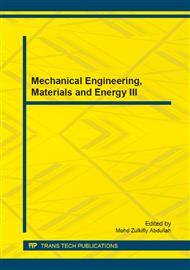p.569
p.574
p.578
p.583
p.587
p.594
p.599
p.603
p.607
Model and Algorithm for Thermal Performance Calculation of Power Station Boiler Based on Process Steady-State Simulation Theory
Abstract:
Thermal performance calculation is the core task of designing power station boiler. By abstracting generalized components and generalized fluid nodes, and defining the process unit and process section at the logic level, the universal physical model of boiler was built in a particular form of flowsheet. Meanwhile, a sequential modular approach was proposed as the main algorithm for boiler thermal calculation based on process system steady-state simulation theory. Two key problems in the algorithm, i.e., module calculations and the logics of calling the modules calculations were explained. Finally, a practically developed system BESS, which has excellent flexibility and extensibility was presented. It turns out that the model and algorithm can be successfully employed in developing the general-purpose software for boiler thermal calculation.
Info:
Periodical:
Pages:
587-593
Citation:
Online since:
December 2013
Authors:
Keywords:
Price:
Сopyright:
© 2014 Trans Tech Publications Ltd. All Rights Reserved
Share:
Citation:


